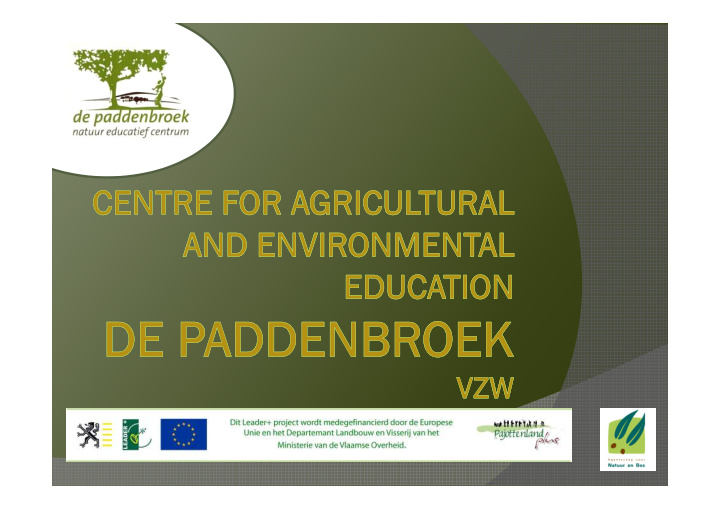



To bridge the gap between sustainable agriculture (fruit) and the impact on scenery and environment through: Development of the setting as an example of a sustainable Development of the setting as an example of a sustainable � � relationship between agriculture-environment-scenery Development of agricultural and environmental education � Centre for other agricultural and environmental activities � Kyoto-centre: centre for renewable energy � In a sustainable agricultural landscape (Pajottenland)
Example of possible sustainable links between agriculture (fruit)-scenery-environment through � High-stemmed orchard with 115 varieties (apple, pear, plum, cherry) plum, cherry) � Hedges � 2 natural ponds � Bee demonstration hall � Low-stemmed cherry orchard � Low-high-stemmed orchard � High-stemmed fruit tree nursery � Biological vegetable garden
� Schools: relationship between sustainable agriculture and environment: functions of ponds, hedges, orchards, bees hedges, orchards, bees � Visitors: scenery discovery paths and discovery formulas for orchards, hedges and ponds � Workshops: biological gardening, high-stemmed trees (pruning, grafting), ponds, natural hedges, beekeeping
� Setting for seasonal activities: celebration of solstices � Meeting point for organizations: environmental Meeting point for organizations: environmental and agricultural (guided walks) � Annual baby orchard festivity for the new borns of the community � Annual member feast
Promoting renewable energy solutions through cooperation between communities, farmers and other inhabitants � Promotion of rational energy use through workshops � Promotion of rational energy use through workshops (insulation, windows) � Cooperative development of wind power (Bürgerwindpark) � Cooperative promotion and installation of solar power (Soltherm) � Finding solutions for natural waste products (biomass): pellets and briquettes Our aim: Pajottenland to achieve 20-100-20 by 2020
Recommend
More recommend